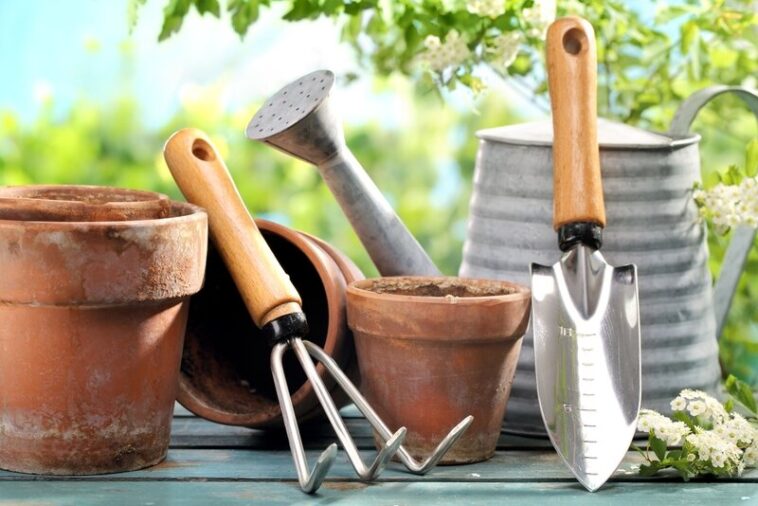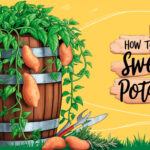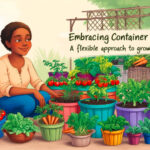Discover the multifaceted world of gardening, from its historical roots to contemporary practices like container gardening, straw bale gardening, and guerrilla gardening. This comprehensive guide explores the mental and environmental benefits of gardening, along with practical tips and techniques for beginners and experienced gardeners alike. Enhance your understanding of various gardening types and the essential tools required to create thriving green spaces in any environment. Embrace the journey and reap the holistic benefits of nurturing both plants and yourself.
Introduction to Gardening
Gardening, a practice rooted in ancient history, has evolved significantly over millennia. Initially, it emerged as a basic means of subsistence, wherein early humans cultivated plants for food, medicine, and other utilitarian purposes. As civilizations progressed, so did the art of gardening, transforming not only in technique but also in its manifold functions. From the years of monastic gardens in medieval Europe to the botanical explorations of the Victorian era, gardening has continued to expand in scope and significance.
Today, gardening serves a multitude of roles. It stands as a therapeutic activity that promotes mental well-being, offering a meditative escape from the stresses of daily life. Engaging in gardening activities has been shown to lower cortisol levels, reduce anxiety, and deliver a sense of accomplishment. Beyond personal health, gardening plays a crucial role in promoting environmental sustainability. Practices such as composting, mulching, and water conservation within gardening contribute to soil fertility, biodiversity, and the mitigation of urban heat islands. Furthermore, community and urban gardens have been pivotal in enhancing food security, particularly in underprivileged areas, by providing fresh, nutritious produce accessible to all.
Gardening can be categorized into several types, each with its unique approaches and benefits. Traditional outdoor gardening encompasses residential and community gardens, reflecting individuals’ personal tastes and local ecosystems. Container gardening offers a viable solution for those with limited space, allowing plants to thrive indoors or on balconies and patios. For the more innovative gardener, hydroponics and aquaponics present soil-less options that maximize efficiency in both space and resources. Xeriscaping, which focuses on drought-resistant plants, exemplifies a water-efficient approach, particularly vital in arid regions. Vertical gardening combines aesthetics with functionality, making efficient use of vertical space in urban settings.
As we delve deeper into this comprehensive guide, each section will elaborate on these types and more, providing hands-on tips and detailed insights for both novice and experienced gardeners. The journey through the garden promises not only a feast for the senses but also a deeper connection to nature and community.
Types of Gardening: An Overview
Gardening is a multifaceted hobby that allows enthusiasts to explore a myriad of methods tailored to various environments and personal preferences. Understanding the types of gardening available can help individuals select the most suitable approach for their specific situations. Each method—be it container gardening, straw bale gardening, guerrilla gardening, or urban gardening—offers distinct advantages and caters to different needs and constraints.
Container gardening is an ideal solution for those with limited space. Utilizing pots, tubs, or barrels, gardeners can cultivate flowers, herbs, and even small vegetables. This method is particularly beneficial for urban settings or areas with unsuitable soil. The mobility of containers also allows for better control over environmental factors such as sunlight and water, providing an excellent way to maintain a garden, whether on a balcony or a patio.
Straw bale gardening presents a unique organic gardening option. By using decomposing straw bales as the growing medium, this method offers ease of access and eliminates the need for traditional soil. It’s an excellent choice for locations with poor soil conditions. The process involves conditioning the bales with water and fertilizer over a couple of weeks and then planting directly into the straw. The decomposition of the bales provides essential nutrients to the plants, encouraging robust growth.
Guerrilla gardening, commonly practiced in urban areas, involves planting flowers or edible plants in neglected public spaces. This type of gardening not only beautifies the landscape but also promotes community engagement and environmental stewardship. While often carried out without official permission, guerrilla gardening brings greenery to concrete-dominated environments and can inspire more sustainable urban development.
Urban gardening encompasses a broad spectrum of practices adapted to city living. This includes rooftop gardens, vertical gardening, and community gardens. These approaches maximize limited space and often aim to enhance food security, improve air quality, and foster community interaction. Urban gardening initiatives can transform cityscapes, making them greener and more livable while providing fresh produce to residents.
Container Gardening: A Flexible Approach
Container gardening offers a versatile solution for those with limited space or a desire for a more manageable gardening experience. It harnesses the ability to grow plants in various containers, turning balconies, patios, and even indoor spaces into thriving green areas. This practice is especially beneficial for urban environments and small-scale growers.
The types of containers that can be used are diverse, ranging from traditional clay pots to repurposed household items like buckets and wooden crates. The choice of container largely depends on the plant’s size and growth habit, with larger plants requiring more substantial containers to accommodate their root systems.
Key to successful container gardening is the soil selection; it is typically recommended to use a high-quality potting mix, which provides an ideal balance of aeration, drainage, and nutrients. Regular garden soil is often too heavy and may not drain well in containers, leading to root rot. Opt for a mix that includes organic matter like compost to ensure your plants receive the nourishment they need.
When it comes to plant selection, nearly any type of plant can be grown in a container, from herbs and vegetables to flowers and small shrubs. Choose plants that are well-suited to your local climate and the available light; for instance, herbs like basil and rosemary thrive in sunny spots, while leafy greens like spinach can tolerate partial shade.
Efficient care is crucial to maintaining healthy container gardens. Frequent watering is essential as container plants tend to dry out faster than those in the ground. Employing a routine that includes checking moisture levels daily and watering thoroughly can prevent wilting and other moisture-related issues. To conserve water, consider using mulch on top of the soil to reduce evaporation.
Space maximization can be achieved by using vertical gardening techniques, such as trellises or wall-mounted planters, allowing gardeners to make the most of limited areas. Additionally, rotating crops and interplanting can enhance the yield and health of your container garden.
Managing pests in containers is often simpler than in traditional gardens because the controlled environment reduces the risk of widespread infestation. Regular inspection and the use of natural deterrents, like neem oil or insecticidal soap, can keep pests at bay.
Container gardening is a flexible approach that brings gardening within reach for many who might otherwise find it inaccessible. With careful selection of containers, soil, and plants, along with diligent care and space utilization, anyone can cultivate a productive and beautiful garden, no matter the size of their living space.
Introduction to Straw Bale Gardening
Straw bale gardening is an innovative approach that embodies sustainability, affordability, and practicality. It involves utilizing bales of straw as planting mediums rather than traditional soil plots. One of the most notable benefits of straw bale gardening is its ability to minimize soil-borne diseases. By using a medium devoid of earth, gardeners can bypass many common pathogens inherent to soil.
To begin, the straw bales need to be conditioned—a vital preparatory step ensuring the bales are suitable for planting. Conditioning typically involves soaking the bales with water for several days and incorporating a nitrogen-rich fertilizer. This process kick-starts decomposition, creating a nutrient-rich environment within the straw bales. Generally, the conditioning phase spans 10-14 days, at which point the bales will be ready for planting.
Planting in straw bales is both straightforward and effective. Gardeners make small pockets in the conditioned straw and fill them with a potting mix or compost. Seeds or young plants can then be placed directly into these pockets. Suitable crops for straw bale gardening include tomatoes, cucumbers, potatoes, and a variety of herbs. Leafy greens such as lettuce and spinach also thrive well in this unique medium.
Maintaining a straw bale garden requires adequate watering and occasional fertilization. It is essential to keep the bales consistently moist but not waterlogged. As the straw decomposes, it provides a continuous release of nutrients, but supplemental feeding will help ensure robust plant growth. Moreover, monitoring for pests and diseases is necessary, although straw bales are generally less susceptible than traditional soil gardens.
Despite its numerous advantages, straw bale gardening does present some challenges. Ensuring proper hydration can be tricky, and bales may not provide as much stability for taller plants, necessitating additional support structures. Additionally, as the straw continues to break down, periodic replenishment with fresh organic material may be required to sustain optimal growing conditions.
The Role of Gardening Supplies and Tools
Gardening, a fulfilling and impactful activity, is significantly enhanced by the appropriate use of essential gardening supplies and tools. Every gardener, whether a novice or an expert, should be equipped with basic yet crucial instruments to foster a productive gardening experience. Amongst these, a trowel stands out as indispensable for digging, planting, and weeding, allowing for precision handling of various soil types. Complementing this is the use of gardening carts and wagons, which alleviate the physical strain of transporting heavy soil, plants, and other supplies across the garden, thereby enhancing overall efficiency and ease.
Another cornerstone of the gardening toolkit is the watering can. Available in various sizes, this tool ensures that plants receive adequate hydration, a fundamental aspect of healthy plant growth. The ergonomically designed handle of watering cans also promotes ease of use, reducing fatigue during prolonged watering sessions. Additionally, gardening gloves are an often underestimated yet vital component. They protect the hands from thorns, splinters, and soil contaminants, and provide a firm grip on tools, ensuring both safety and efficiency.
Investing in quality gardening tools is not merely a matter of luxury, but of practicality and longevity. High-quality tools are often made from durable materials such as stainless steel or heavy-duty plastic, which resist wear and tear, ensuring sustained functionality over time. Regular maintenance, including cleaning and proper storage, further extends the life of these tools, preventing rust and degradation. For instance, sharpening blades, oiling moving parts, and storing tools in a dry, sheltered area are small yet impactful practices.
Ultimately, these supplies and tools significantly ease the gardening process, promoting better outcomes through meticulous care and efficiency. As a result, gardeners can more effectively cultivate their outdoor spaces, leading to flourishing plants and a rewarding gardening experience.
Guerrilla Gardening: Gardening Without Boundaries
Guerrilla gardening is a grassroots initiative that involves the cultivation of plants in neglected or abandoned urban spaces. Its origins can be traced back to the early 1970s in New York City, where activists sought to transform desolate lots into green, vibrant areas. The primary purpose of guerrilla gardening is to reclaim public spaces, enhance urban environments, and promote community engagement through the beauty and function of horticulture.
The ethics of guerrilla gardening revolve around community improvement and environmental stewardship. While the act often operates in legally gray areas, its intentions are generally benign and focus on the betterment of public spaces. Guerrilla gardeners typically work under the cover of night to avoid legal repercussions, planting flowers, herbs, and vegetables in neglected parcels of land.
Successful guerrilla gardening projects across the globe have demonstrated the positive impact of these efforts. In London, Richard Reynolds, a pioneer of modern guerrilla gardening, has transformed numerous urban spaces, creating pockets of greenery that not only beautify the city but also foster a sense of community. In Los Angeles, Ron Finley’s initiatives have turned vacant lots into community food gardens, addressing the issue of urban food deserts and encouraging healthier lifestyles.
To start a guerrilla garden, begin by selecting a suitable location. Look for neglected or underutilized areas such as vacant lots, roadsides, or unkempt public spaces. Once you’ve identified a spot, assess the soil quality and sunlight exposure to determine the best types of plants for the area. Hardy, low-maintenance plants such as wildflowers, succulents, and native grasses often fare well in these unpredictable conditions.
Choosing plants that are adaptable to local climates and require minimal upkeep ensures the longevity of your project. Additionally, edible plants like herbs and vegetables can provide practical benefits to the community while enhancing green space. It’s crucial to navigate the legal considerations, which might include seeking permission from property owners or local authorities. While the renegade nature of guerrilla gardening is part of its charm, obtaining partial or full consent can minimize potential conflicts and sustain your efforts over time.
Guerrilla gardening not only revitalizes urban landscapes but also fosters a sense of community and environmental responsibility. By carefully choosing locations, selecting appropriate plants, and understanding the legal landscape, individuals can effectively contribute to the greening of their cities, transforming forgotten urban spaces into thriving green oases.
Literature and Resources for Gardeners
Expanding one’s gardening expertise often involves delving into a wealth of literature and resources that offer valuable insights and practical advice. Among the most notable works in this field is A Handbook for Gardening Without Boundaries, a comprehensive guide focusing on inclusive gardening techniques regardless of space or environmental limitations. This book provides innovative solutions for urban gardening, container gardening, and using unconventional spaces such as rooftops and balconies. By emphasizing sustainability and resourcefulness, the handbook empowers gardeners to maximize their growing potential.
Another exemplary resource is Rebel Gardening: A Beginner’s Handbook to Organic Urban Gardening. This book serves as an essential guide for those new to gardening, with a keen focus on organic methods. It introduces readers to the foundational principles of soil health, composting, and pest management, all while maintaining an eco-friendly approach. The author’s emphasis on community gardens highlights the social aspect of gardening, fostering a sense of collaboration and shared purpose among urban dwellers.
Further, The Vegetable Gardener’s Bible by Edward C. Smith and The Flower Gardener’s Bible by Lewis Hill and Nancy Hill are indispensable texts that delve deeply into the specifics of cultivating edible and ornamental plants respectively. Smith’s work stands out for its comprehensive plant-specific advice and soil-preparation techniques, which make it a staple for vegetable gardeners. Conversely, the Hills’ book is a treasure trove for those dedicated to ornamental gardening, offering detailed guidance on plant selection, design principles, and seasonal care.
In addition to these cornerstone texts, periodicals such as Gardeners’ World magazine and online resources like the Royal Horticultural Society’s website regularly provide up-to-date advice, seasonal tips, and new gardening trends. These platforms are invaluable for both amateur and seasoned gardeners looking to stay informed about best practices and emerging innovations in the gardening world.
Collectively, these resources equip gardeners with the knowledge to enhance their skills and adopt environmentally sustainable practices, encouraging a more holistic and informed approach to making the most of their green spaces.
Conclusion: Embracing the Gardening Journey
Throughout this comprehensive guide, we have navigated various essential aspects of gardening, from fundamental concepts to practical tips. Gardening, as we have explored, is a multifaceted activity that encompasses environmental stewardship, personal well-being, and aesthetic fulfillment. Each section provided insights into starting a garden, whether at home or in a community space, understanding plant types, recognizing the importance of soil health, and efficiently managing water resources.
The holistic benefits of gardening cannot be overstated. It fosters a stronger connection with nature, encourages physical activity, promotes mental health, and even has social advantages through community engagement. As a practice, gardening offers an avenue for continuous learning and growth, making it a rewarding hobby for individuals of all ages and skill levels. The cultivation of vegetables, herbs, flowers, or even small trees brings about a sense of accomplishment and allows for a tangible connection between effort and reward.
We encourage you to explore different types of gardening that align with your specific needs and circumstances. Whether it’s container gardening for limited spaces, raised-bed gardening for better soil management, or traditional in-ground gardening for a more extensive plan, there is a style that suits everyone. By experimenting with various methods, you can discover what works best for you and your environment.
As you embark or continue on your gardening journey, embrace the challenges with confidence and curiosity. Every plant nurtured and every flower that blooms stands as a testament to your dedication and patience. Gardening is not just about cultivating plants; it is about nurturing oneself and the environment. Let this guide serve as your companion and inspiration as you create beautiful, thriving gardens.
May your hands stay dirty, and your gardens ever flourishing.




GIPHY App Key not set. Please check settings